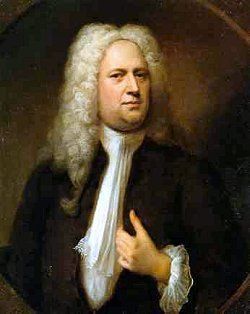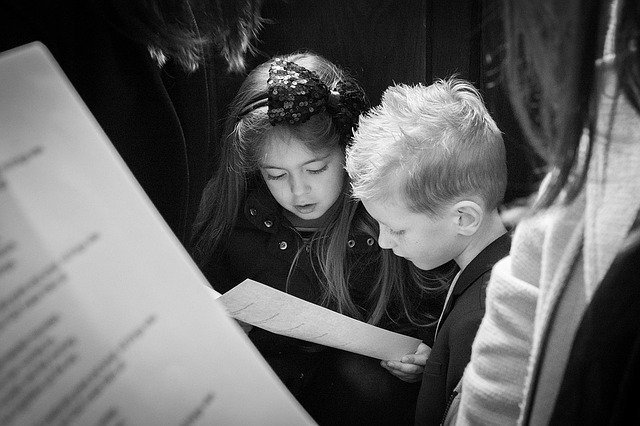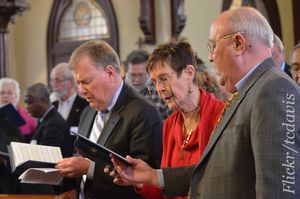The observant worshipper will soon discover the hymns of Philip Doddridge. Indeed, for the vast majority of people, singing his hymns brings their first acquaintance with the author.
Even now, 300 years after his birth, most Christians have sung ‘O God of Bethel’ or ‘Hark the glad sound’.
It is also evident that the popularity of Doddridge’s hymns is not restricted to any particular denomination. They have always had a truly catholic appeal.
Known and sung
Although the hymns of Philip Doddridge constitute the smallest fraction of his immense literary output, they are more commonly known than anything else he wrote.
When Job Orton published the third edition of his hymns in 1766, the final number was three hundred and seventy-five, although only a small proportion of these are still sung.
As one would expect, Congregationalism has provided the largest selection of Doddridge’s hymns.

At the peak of his popularity in the nineteenth century, the New Congregational Hymn Book (1859) contained forty-six examples. In Congregational Praise (1951), only fourteen hymns appear, although that is still an improvement on the earlier Congregational Hymnary (1922) which contained only eleven.
Other denominations have by no means ignored Doddridge. The Church of England just recognises his talent by including five of his hymns in Hymns Ancient and Modern (1950).
In the 1970s, Doddridge made a mini-come back in two Evangelical collections. The Strict Baptist Grace Hymns (1974) included thirteen, but Christian Hymns (1977) made space for twenty-three.
The latest Methodist book of Hymns and Psalms (1983) has nine, an improvement on the seven of the earlier Methodist Hymn Book (1933).
In changing times, the very recent Praise! (2000) still manages nine, rather heavily-modernised examples.
Prime colour of Calvinism
How does Philip Doddridge rate as a hymn writer? There can hardly be any doubt that Charles Wesley occupies first place, closely followed by Isaac Watts.
Dr Erik Routley believes that James Montgomery takes the honours for third place, but is equally sure that Doddridge is entitled to fourth place.

If John Newton and William Cowper come close behind, Dr Routley says of Doddridge: ‘In technique, consistency, sound doctrine, and the sense of what is fit for congregational use, he gives place to neither of our friends at Olney.
‘He is less of a poet than Cowper, more of a scholar than Newton and, we here claim, a better hymn writer than either.’
Regarding doctrinal sentiments, hymns do not generally reveal the minutiae of every theological conviction held by the writer. They are not theological documents as such; they are visions in verse.
That said, Dr Routley is prepared to say of Doddridge: ‘one prime colour runs right through his hymns from beginning to end … one quality gives away his theological leanings in every verse as unmistakably as Beethoven gives himself away in scoring a woodwind chord; this is the tone quality, or colour, of Calvinism’.
Disapproval
Dr Routley then explains the lack of general appeal of Doddridge’s hymns to the modern generation. It lies not only in what is loosely called ‘improvement in congregational taste’, but in a certain tendency away from his ‘virile and salty Calvinism’.
This is probably true where attachment to historic Calvinism has declined. However, in some of today’s Calvinistic circles, the fact that Doddridge wrote hymns at all is a cause for disapproval!
Indeed, exclusive-psalmody Presbyterians reject all hymns of ‘human composition’ in the name of ‘Scripture-sufficiency’.
However, they seem unaware that they infringe their own idea of ‘the regulative principle’ by subscribing to the man-made Westminster Confession of Faith.
Surely, if confessions of faith are permissible and desirable, why not hymns also? If ‘Scripture-sufficiency’ excludes hymns, the same should apply to sermons, prayers and confessions which use words not found in the Bible.
What is required, surely, is that all expressions of Christian doctrine and worship should be governed by the content of biblical truth.
Influence of the Spirit
When Doddridge wrote his hymns, he believed he was acting according to the specific directives of Scripture. After all, the apostle Paul urged the early Christians to praise God with ‘hymns and spiritual songs’ as well as ‘psalms’ (see Ephesians 5:19; Colossians 3:16).
Thus Doddridge paraphrased Paul saying that ‘public worship’ should include ‘the use of David’s psalms, and other evangelical hymns’ which may be composed ‘under the influences of the Spirit’.
Unjustly blaming Calvin (to whom a hymn is attributable) instead of his more rigid successors, Doddridge rejects the idea that Paul’s words simply refer to three types of Old Testament psalm.
After observing the gift of hymnody in the New Testament (see 1 Corinthians 14: 15, 26), Doddridge adds that if the exclusive psalmody view is granted: ‘it would certainly be as reasonable for us, in these later ages, to explode all kind of prayers in public, but liturgies collected from the words of Scripture, as [well as] all sacred songs in divine worship, but literal translations from … the book of Psalms’.
Worship
So he concludes that ‘Numberless passages of the Old and New Testament are equally capable of furnishing us with sacred anthems’. In short, the case for exclusive psalmody is not persuasive.
The fact that Mary, Zacharias and Simeon praised God in words other than — albeit influenced by — the psalms is sufficient to confirm this.
To argue that their ‘canticles’ are Scripture (see Luke 1: 46-55; 68-79; 2:29-32) misses the point. It is Luke’s account that made them Scripture, not the original utterances.
A brief digression is in order. Consistent with his radical sola scriptura stance, Doddridge had something to say on other controversial aspects of worship.
Like John Owen and many other Puritans who usually declined to use liturgies, he was not absolutely opposed to them, only to their imposition.
Regarding the Lord’s Prayer, he was happy to use it as a ‘directory’ but equally as an optional form. Not averse to the use of fixed prayers, he supplied the like at the end of each chapter of the Rise and Progress.
While he said little about the use of a Christian calendar, he was critical of the traditional Christmas.
The Rev. George Costard, Fellow of Wadham College, Oxford, commented on Doddridge’s Family Expositor: ‘As to December being the time of Christ’s birth, I think with you that the opinion is without foundation’.
Spiritual warmth
Unlike those who tend to disregard the psalms in favour of other compositions, Doddridge recognised that both have a place in Christian worship.
His 375 hymns included 43 new metrical versions of psalms, plus paraphrases based on other passages from both Old and New Testaments.
While, arguably, his hymns lack the bold brilliance of Charles Wesley, they are, like his sermons, always expository.
Unlike Wesley, who could never resist controversial versification when the Calvinistic Toplady was around, Doddridge’s hymns are free from the occasional theological dissonance of Wesley’s productions.
Nevertheless, Wesley and Toplady — who never settled their disputes — both produced excellent hymns. But the undoubtedly ‘Calvinistic’ works of Doddridge, with their perpetual spiritual fragrance and warmth, are worthy companions to the other hymns of the Evangelical Revival.
Hymns and sermons
The circumstances in which Doddridge composed his hymns tell us a good deal about worship on the Lord’s Day at Castle Hill, Northampton, during his ministry there.
They were written when the author had completed his sermon preparation, and were based on the text of the sermon.
After the sermon had been preached, the new hymn would be given out, line by line, the singing of which would bring the service to a close. We can therefore deduce the subject-matter of Doddridge’s sermons from his hymns.
When advising his students on the kinds of subject they should prefer in preaching, Doddridge suggests:
‘1. Those that relate more immediately to Christ. The glories of his person; the riches of his grace; his incarnation and birth; his life … his preaching … the sufferings and death to which he voluntarily submitted … his resurrection … his intercession on our behalf …
‘2. The constitution of the Covenant of Grace … the blessings of pardon, grace, and glory … the nature of faith … of repentance … the freedom of God’s grace manifested in this covenant; how ratified by the blood of Christ, the Mediator…
‘3. The influences and operations of God’s Holy Spirit, and our need of them; their use and efficacy in enlightening the mind, convincing the judgement, renewing and sanctifying the soul; quickening to duty, fortifying against temptation, assisting in prayer, and comforting true Christians, by witnessing their adoption,etc…
‘4. The privileges of true Christians, e.g. pardon of sin, renewing, strengthening and confirming grace; adoption, perseverance, through continued Divine influences; God’s providential care over them, ordering all things for their advantage; giving them access to his presence, believing views of glory, etc…’
Edification
If such subjects as these formed the staple diet of Doddridge’s congregation, we can be sure that the edification received through the preached Word was given suitable expression in praise following the sermon.
It is perhaps highly significant that those hymns which continue to enjoy considerable popularity centre their subject matter on the very subjects Doddridge suggested for preaching.






